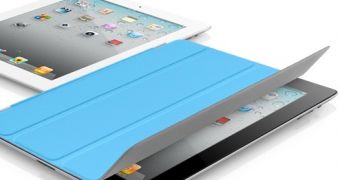Tablets have definitely become one of the major concerns of analysts and it looks like any possible occurrence on their segment gets attention, such as the likelihood of them using more memory.
Tablets PCs have already been said to have begun eroding the market share of netbooks and even notebooks, even despite their prices.
Granted, the iPad and iPad 2 can actually be seen as the more affordable representatives of the segment, but even they exceed many netbooks in terms of price.
What's more, Android OS-loaded slates, particularly those brought out during CeBIT 2011 and MWC (Mobile World Congress) are even pricier.
Nevertheless, that fact is that slates are selling well, and while the iPad does dominate shipments, this did nothing to change iSuppli's findings.
Basically, upon analyzing trends and the overall direction taken by the industry, the market research firm reached the conclusion that media slates will start using more and more dynamic random access memory (DRAM).
On average, memory capacity will jump by 147% by the end of the year (2011), to 676 MB, and seeing such a path is not really surprising, considering that smartphone average DRAM levels are also expected to grow, by 62% during the same time frame.
“With tablets handling more data-intensive applications such as video, the average DRAM content in these platforms during 2011 will be about two-and-a-half times more than last year’s 274MB,” said Mike Howard, principal analyst for DRAM & memory at IHS.
“The rapid expansion will continue next year, when average DRAM in tablets reaches approximately 1.3 gigabytes (GB). In 2015, tablets will have DRAM content similar to that of today’s laptops, reaching 3.7GB.”
iSuppli went one step further and said that growth would have been even more alert if Apple's iPad 2 had included 1 GB of RAM instead of 512 MB.

 14 DAY TRIAL //
14 DAY TRIAL //